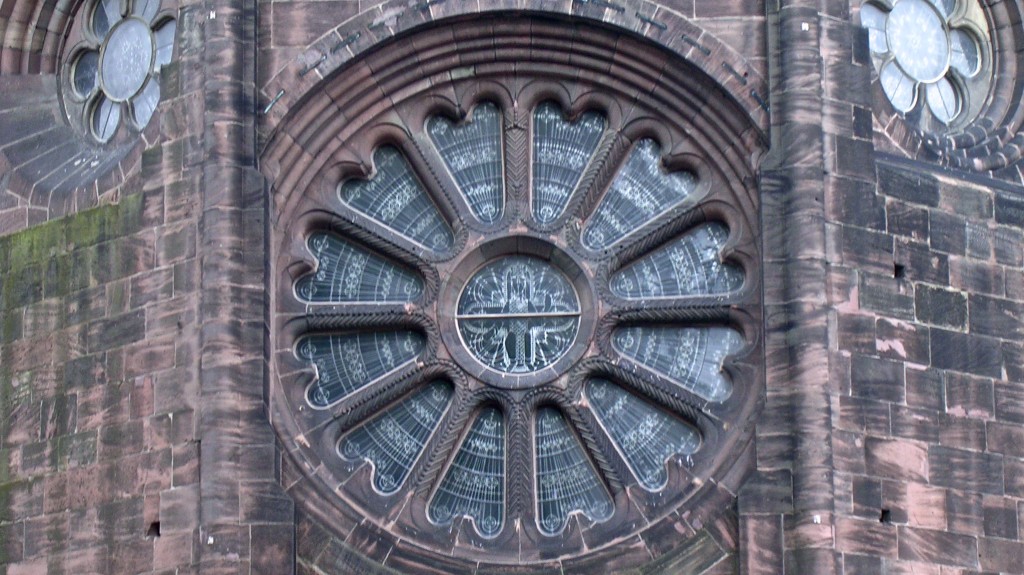First Sunday After Christmas Day | Luke 2:22-40
Christmas Truth
The Lectionary Project
Luke tells a story not found in the other Gospels, a story about the infant Jesus  being presented at the temple in accordance with Jewish law. The child is circumcised and named, and he enters into the life of the Jewish people with the blessing of the establishment who would later condemn him and call for his crucifixion.
being presented at the temple in accordance with Jewish law. The child is circumcised and named, and he enters into the life of the Jewish people with the blessing of the establishment who would later condemn him and call for his crucifixion.
In this short story we meet Simeon and Anna, an old man and an old woman, both waiting in faith to meet the Messiah. Had they grown old looking forward to this day, or were Simeon and Anna looking forward to this day, to God coming into their world, because they were old? We don’t know. Luke does not tell us, and there’s no other mention of them.
Were they real people, factual folk, or were they something more symbolic?
Luke’s account of the birth of the Messiah differs from that of Matthew, and both of these gospels differ from John and Mark. Other than the symbolism of John’s prologue, John and Mark skip over the birth narrative entirely. We could fret over the differences, the omissions, the additions, or we could accept what we have. Truth is not the same as factual detail. The facts of our existence are small and lose importance over time. The truths of our existence are less substantial, less documented, but more important.
We might hear the story of the birth of Christ and regard the event as a fact. We might also hear it as truth, the elements of the story each relating something true about our existence and God.
The temple, where an infant Jesus encounters Anna and Simeon, is huge— clean stone walls, walkways, polished bronze and gold, guards and priests with fresh robes and gleaming adornment. It is a gateway, the keeper of the rituals and the entrance into the communal life of the Jewish people. It is also the symbol of the establishment, the place where communion with God is being traded for the mere observance of rules, because the rules are simpler and easier to follow than a God who cannot be seen.
 The old man and woman are also symbols. They are the wise, the seekers, the faithful, not trading their faith for rules, not exchanging their expectation of God’s coming for empty observances. They are children, waiting with pure devotion.
The old man and woman are also symbols. They are the wise, the seekers, the faithful, not trading their faith for rules, not exchanging their expectation of God’s coming for empty observances. They are children, waiting with pure devotion.
The temple and these old wise people are also part of us, within each of us. We value such rituals as we have, whether kneeling in prayer or checking our emails, for the way that they help us to define our existence. Stone by stone, we build temples in our minds. At the same time, deep in our minds dwell a Simeon or an Anna, telling us to look for more, something we have not seen in the great temples we construct around us. Look for something real, the old ones tell us, something that may not be so much a fact of our existence as a mark of genuine truth.
Then there is the child. This infant, now named Jesus—both a name and a meaning, Jesus, Yeshua, Joshua, Savior—is a small thing, of little importance by comparison to the great stone walls and priestly rituals surrounding him. This child does not look more special than any other child the temple walls have held, no more special than any we ourselves have seen. Only the two wise ones recognize him. This child, born in poverty, in the muck and straw of a stable, is God becoming, Emmanuel, truth unremarked by eyes that are filled only with the splendor of the temple.
Christmas is not a day or a season. We open the presents, put away the ornaments, and say that it is over, but that is only the ritual, a small thing that we have named and welcomed and that passes, facts and details marking a holiday. The truth of Christmas is in the expectation of what has come, and what is yet to come. That is what our Simeon and Anna are waiting to see. That is what we are waiting to see, the coming of truth, God made real.


